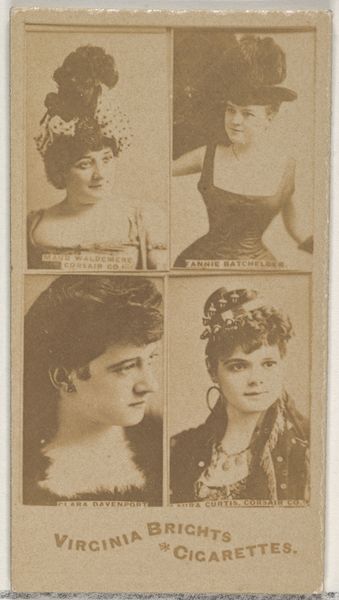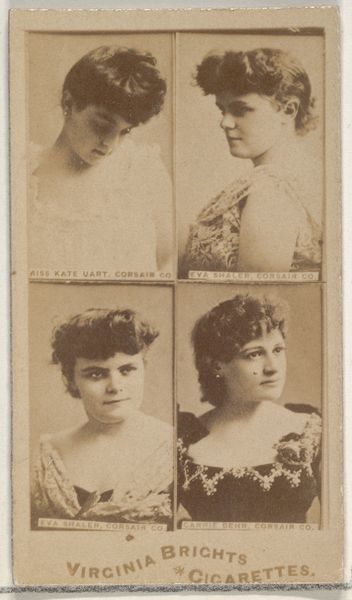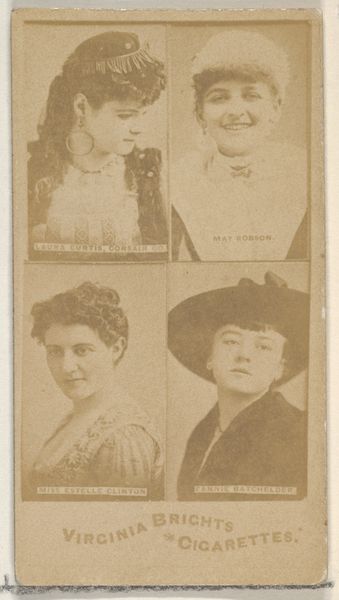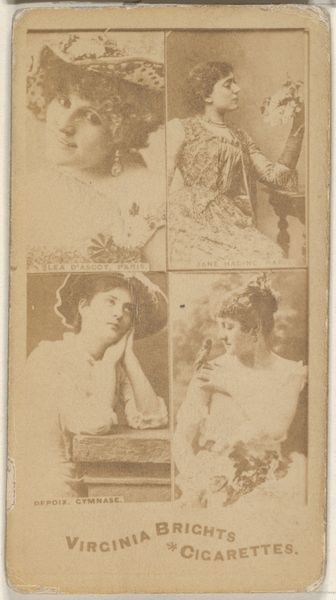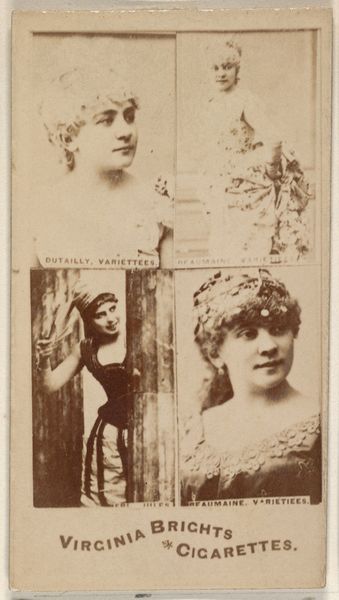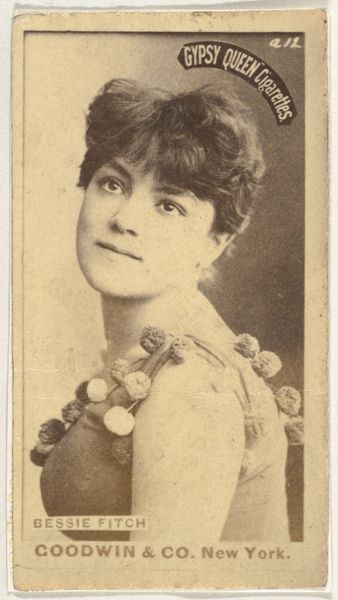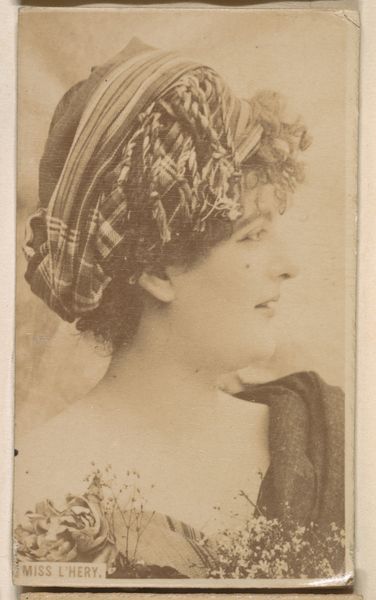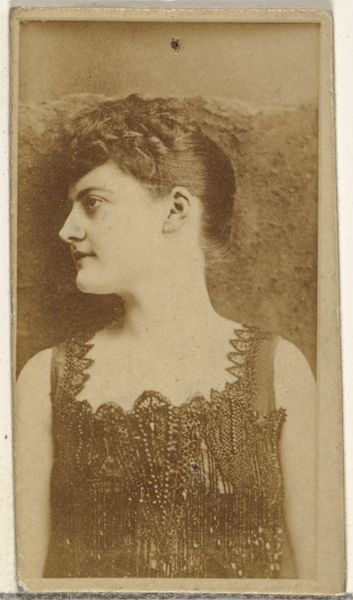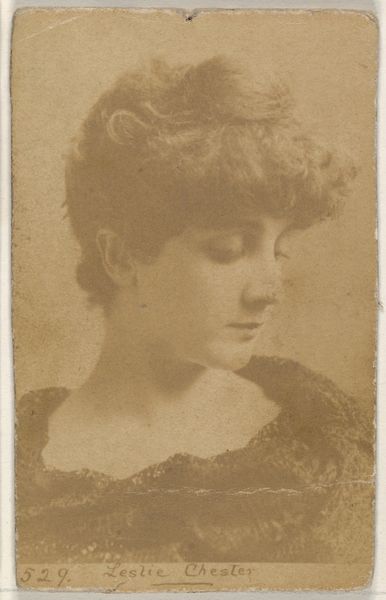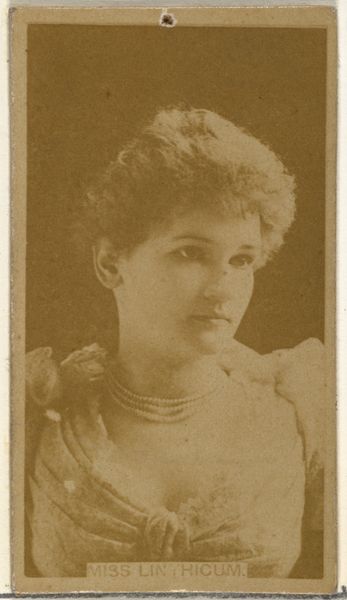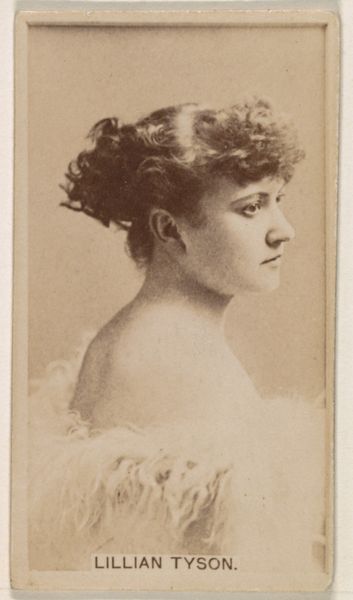
Miss Sadie Kirby/ Fannie Batchelder, from the Actors and Actresses series (N45, Type 4) for Virginia Brights Cigarettes 1885 - 1891
0:00
0:00
drawing, print, photography
#
portrait
#
drawing
# print
#
photography
Dimensions: Sheet: 2 3/4 x 1 3/8 in. (7 x 3.5 cm)
Copyright: Public Domain
Curator: Let's examine this card, titled "Miss Sadie Kirby/Fannie Batchelder, from the Actors and Actresses series (N45, Type 4) for Virginia Brights Cigarettes," created between 1885 and 1891. Editor: My first impression is how small and utilitarian it appears; a tiny window into late 19th-century celebrity culture bound to a mass-produced, commercially driven artifact. Curator: Precisely! It's crucial to understand how these cards functioned as promotional material. Distributed with cigarettes, they reflect the intersection of consumer culture and popular entertainment, aimed at constructing desire through idealized images of women, especially actresses. Think of the limited visibility for women within public life; this marks an interesting shift through which women were commodified to sell cigarettes. Editor: The material reality of it—cardboard, mass-produced photography—speaks volumes about the industrialization of leisure. Unlike painted portraits that were only accessible to the elite, this was widely disseminated. I'm curious about the specific printing process, the inks used, the machinery. What were the labor conditions in the factories where these were churned out? Curator: Those considerations bring forth fascinating details about class, gender, and power within production systems of the time. The actresses depicted are primarily defined by their visual appeal, serving a male gaze implicit in the cigarette consumer demographic, perpetuating an unbalanced structure. Editor: It seems the ephemeral nature is crucial. They were made to be discarded, collected, traded, reinforcing cycles of consumption. Each card represents an exchange of labor and materials, packaged into a fleeting moment of consumption. This constant churn underscores a larger, socially pervasive pattern. Curator: By analyzing these types of artifacts through intersectional lenses—considering class, gender, and economic structures—we illuminate historical and societal biases. What began as ephemeral tobacco marketing turns out to tell the story of production. Editor: A tiny material trace revealing how leisure, celebrity, and consumerism coalesced to form the modern landscape. This reminds me of Walter Benjamin's insights on arcades. Curator: I agree! There's more here than initially meets the eye.
Comments
No comments
Be the first to comment and join the conversation on the ultimate creative platform.
